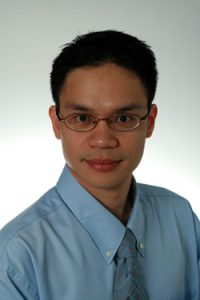 Prof. Mohsen Guizani
Prof. Mohsen Guizani
Title: Smart Systems for Livable Communities Along the Vision of 6G
Bio:
Mohsen Guizani (S’85–M’89–SM’99–F’09) received the B.S. (with distinction) and M.S. degrees in electrical engineering, the M.S. and Ph.D. degrees in computer engineering from Syracuse University, Syracuse, NY, USA, in 1984, 1986, 1987, and 1990, respectively. He is currently a Professor at the Computer Science and Engineering Department in Qatar University, Qatar. Previously, he served in different academic and administrative positions at the University of Idaho, Western Michigan University, University of West Florida, University of Missouri-Kansas City, University of Colorado-Boulder, and Syracuse University. His research interests include wireless communications and mobile computing, computer networks, mobile cloud computing, security, and smart grid. He is currently the Editor-in-Chief of the IEEE Network Magazine, serves on the editorial boards of several international technical journals and the Founder and Editor-in-Chief of Wireless Communications and Mobile Computing journal (Wiley). He is the author of nine books and more than 600 publications in refereed journals and conferences. He guest edited a number of special issues in IEEE journals and magazines. He also served as a member, Chair, and General Chair of a number of international conferences. Throughout his career, he received three teaching awards and four research awards. He also received the 2017 IEEE Communications Society WTC Recognition Award as well as the 2018 AdHoc Technical Committee Recognition Award for his contribution to outstanding research in wireless communications and Ad-Hoc Sensor networks. He was the Chair of the IEEE Communications Society Wireless Technical Committee and the Chair of the TAOS Technical Committee. He served as the IEEE Computer Society Distinguished Speaker and is currently the IEEE ComSoc Distinguished Lecturer. He is a Fellow of IEEE and a Senior Member of ACM.
Abstract:
Internet of Things (IoT) is transforming our society and daily lives by connecting the world. This is expected to fundamentally transform industry, business, transportation and healthcare. However, this ubiquitous connection brings with it many challenges that range from security, smart cities, big data analytics, to device-level protocols. It is estimated that there will be billions of IoT devices that need to be connected in the next few years. In addition, more than half of the world’s population live in cities, many with multiple devices that need to be connected to the Internet. This is expected to create a complex infrastructure. These smart services rely on computation and communication resources. Furthermore, being able to provide adequate services using these complex systems present enormous challenges.
On the other hand, the ongoing deployment of 5G cellular systems is continuously exposing its inherent limitations, compared to its original premise as an enabler for Internet of Everything (IoE) applications. These drawbacks are the basis of worldwide activities focused on envisioning the 6G wireless system that can truly integrate IoE complex environments. The 6G system is not expected to be a mere exploration of more spectrum at high-frequency bands, but it will rather be a convergence of upcoming technological trends driven by exciting and complex systems.
In this talk, we review the current efforts by experts around the world to mitigate some of these challenges. Then, we showcase our research activities to contribute to these efforts and advocate possible solutions using AI and other tools. We provide ways on how to manage the available resources intelligently and efficiently in order to offer better living conditions and provide better services. Then, we discuss some of our research results to support a variety of applications including healthcare, security, and intelligent transportation systems. Finally, we conclude by providing concrete recommendations for the roadmap toward 6G.
 Prof. Dusit Niyato
Prof. Dusit Niyato
Title: Applications of Game Theory in Blockchain
Bio:
Dusit Niyato is currently a professor in the School of Computer Science and Engineering and, by courtesy, School of Physical & Mathematical Sciences, at the Nanyang Technological University, Singapore. He received B.E. from King Mongkuk’s Institute of Technology Ladkrabang (KMITL), Thailand in 1999 and Ph.D. in Electrical and Computer Engineering from the University of Manitoba, Canada in 2008. He has published more than 380 technical papers in the area of wireless and mobile networking, and is an inventor of four US and German patents. He has authored four books including “Game Theory in Wireless and Communication Networks: Theory, Models, and Applications” with Cambridge University Press. He won the Best Young Researcher Award of IEEE Communications Society (ComSoc) Asia Pacific (AP) and The 2011 IEEE Communications Society Fred W. Ellersick Prize Paper Award. Currently, he is serving as a senior editor of IEEE Wireless Communications Letter, an area editor of IEEE Transactions on Wireless Communications (Radio Management and Multiple Access), an area editor of IEEE Communications Surveys and Tutorials (Network and Service Management and Green Communication), an editor of IEEE Transactions on Communications, an associate editor of IEEE Transactions on Mobile Computing, IEEE Transactions on Vehicular Technology, and IEEE Transactions on Cognitive Communications and Networking. He was a guest editor of IEEE Journal on Selected Areas on Communications. He was a Distinguished Lecturer of the IEEE Communications Society for 2016-2017. He was named the 2017, 2018 highly cited researcher in computer science. He is a Fellow of IEEE.
Abstract:
Blockchain has emerged as a new ledger technology for data and transactions management. This decentralized ledger technology relies on consensus protocols and incentive mechanisms among a number of participants, i.e., miners and users, to achieve high data security and integrity. However, the participants are rational and will act according to their interests. As such, game theory appears to be a suitable tool to analyze and optimize the blockchain networks. In this talk, we will present the basics of game theory and review some typical game models such as non-cooperative game, hierarchical game, and evolutionary game that are adopted in blockchain. Then, the game formulations for mining pool management, computing resource allocation, and risk management in blockchain networks will be presented. Some research directions will be also discussed.
 Prof. Sherman Shen
Prof. Sherman Shen
Title: Reinforcement Learning for Resource Management in Space-Air-Ground (SAG) Integrated Vehicular Networks
Bio:
Xuemin (Sherman) Shen is a University Professor, Department of Electrical and Computer Engineering, University of Waterloo, Canada. Dr. Shen’s research focuses on wireless resource management, wireless network security, 5G and vehicular ad hoc and sensor networks. He was the Editor-in-Chief of IEEE IoT J, and served as the General Chair for Mobihoc’15, the Technical Program Committee Chair for IEEE Globecom’16, IEEE Infocom’14, IEEE VTC’10, the Symposia Chair for IEEE ICC’10, the Technical Program Committee Chair for IEEE Globecom’07, the Chair for IEEE Communications Society Technical Committee on Wireless Communications. Dr. Shen was an elected IEEE ComSoc Vice President – Publications, the chair of IEEE ComSoc Distinguish Lecturer selection committee, and a member of IEEE ComSoc Fellow evaluation committee. Dr. Shen received the Excellent Graduate Supervision Award in 2006, and the Premier’s Research Excellence Award (PREA) in 2003 from the Province of Ontario, Canada. Dr. Shen is a registered Professional Engineer of Ontario, Canada, an IEEE Fellow, an Engineering Institute of Canada Fellow, a Canadian Academy of Engineering Fellow, a Royal Society of Canada Fellow, a Chinese Academy of Engineering Foreign Fellow, and a Distinguished Lecturer of IEEE Vehicular Technology Society and Communications Society.
Abstract:
Space-Air-Ground integrated Vehicular Network (SAGVN) is a prominent paradigm, which can simultaneously guarantee ultra-reliability low-latency communications (URLLC) and deliver high-bandwidth traffic anywhere, any environment condition, and any event at anytime. However, it is challenging to manage and allocate the terrestrial network, aerial network (UAV), and space (satellite) resources simultaneously and efficiently, as they have heterogeneous access features in terms of delay, throughput, and coverage range. In addition, high vehicle mobility and real-time decision requirement further render the problem intractable. In this talk, we advocate the usage of reinforcement learning for resource management in SAGVN, which can enable model-free and fast decision makings for adaptive access control, on-demand UAV deployment, and UAV trajectory design. We will also show the detail development of our SAG simulator and some demos.

Prof. Tarik Taleb
Title: Cross Roads for Cloud & Networks
Bio:
Prof. Tarik Taleb received the B.E. degree (with distinction) in information engineering and the M.Sc. and Ph.D. degrees in information sciences from Tohoku University, Sendai, Japan, in 2001, 2003, and 2005, respectively. He is currently a Professor with the School of Electrical Engineering, Aalto University, Espoo, Finland. He is the founder and the Director of the MOSA!C Lab, Espoo, Finland. He is a part-time Professor with the Center of Wireless Communications, University of Oulu, Oulu, Finland. Prof. His research interests lie in the field of architectural enhancements to mobile core networks (particularly 3GPP’s), network softwarization & slicing, mobile cloud networking, network function virtualization, software defined networking, mobile multimedia streaming, inter-vehicular communications, and cloud computing.
Abstract:
Before 5G, mega-scale data was generally generated and cached at single or a few data centers, which resulted in the traditional cloud-centric approach. However, the emergence of the B5G (alternatively termed as 6G) has brought forth zillions of Bytes of data to network edges. Obviously, the emerging new opportunities have spawned the deep integration between cloud and network for ubiquitous AI.

